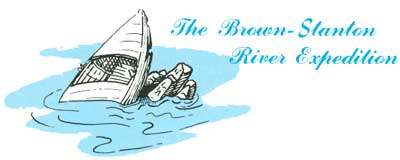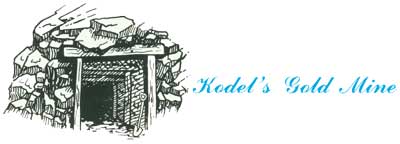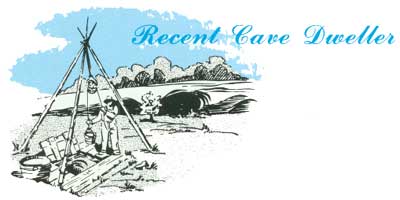
|
Geological Survey Bulletin 1508
The Geologic Story of Colorado National Monument |
LATE ARRIVALS

Early Settlement9
9Taken mainly from Colorado State Planning Commission, 1959, Hamilton, 1956, Beckwith, 1854. and Hayden, 1877.
PRIOR TO 1881 the Monument area was inhabited only by Ute Indians, but it was visited from time to time by a few fur trappers, explorers, and geologists. In 1776 an expedition led by Fathers Dominguez and Escalante passed northward across Grand Mesa, the high plateau just east of the area, which is pointed out in many of the photographs. A trading post was built by Joseph Roubidoux about 1838 just above the present site of Grand Junction. In 1853 Captain John W. Gunnison, seeking a new route for a transcontinental railroad, led an exploring party down what is now the Gunnison River Valley, past the confluence with the Grand River (now called the Colorado, p. 16), and on down the valley. Geologists and topographers of the Hayden Survey found only Ute Indians in the area in 1875 and 1876, and their field season of 1875 was abruptly cut short because of skirmishes with hostile Utes. After the Meeker (Colorado) Massacre of 1879, believed by many to have been caused mainly by the ignorance and short sightedness of Meeker himself, treaties were signed forcing the Utes out of western Colorado onto reservations in eastern Utah, and the last of the Utes was reportedly out of the area by September 1881. The Grand Valley was immediately opened to settlement, and the first ranch was staked out on September 7, 1881. Nineteen days later George A. Crawford founded Grand Junction as a townsite and formed the Grand Junction Town Company the next month. The success of the new town was assured on November 21, 1882, when the narrow-gage line of the Denver and Rio Grande Railroad (now Denver and Rio Grande Western Railroad) reached it via the Gunnison River valley. The town of Fruita was founded by William E. Pabor in 1883 and incorporated the following year.
The Brown-Stanton River Expedition10

10Taken largely from Dellenbaugh. 1902.
OF THE MANY EARLY EXPEDITIONS down the Colorado River, only one went past what is now Colorado National Monument—the ill-fated Brown-Stanton expedition. After the pioneering expeditions of 1869 and 1871 down the Green and Colorado Rivers by Major John Wesley Powell and his men, the many ensuing river expeditions started in Utah or Wyoming; but the first phase of the Brown-Stanton expedition started in Colorado—at Grand Junction. In 1889 Frank M. Brown organized a company for the construction of the proposed Denver, Colorado Canyon, and Pacific Railway, which was to carry coal from mines in Colorado over a "water-level" line through the mighty canyons of the Colorado River to the Gulf of California some 1,200 miles away, from which coal would be shipped to various ports in California. On March 26, 1889, president Brown, chief engineer F. C. Kendricks, and assistant engineer T. P. Rigney drove the first stake at Grand Junction for a survey of the new line. Then Brown left for the East to obtain financing, and the other two men plus some hired hands took off in a boat down the Grand River. After reaching the confluence, they towed the boat up the Green River to the town of Green River, Utah, thus becoming the first to make this trip upstream, albeit on foot and dragging their boats. Brown, who had returned from the East, his newly appointed chief engineer Robert Brewster Stanton, and 14 others in six ill-designed boats of cedar rather than oak, left Green River, Utah, on May 25, 1889. Against the advice of Major Powell and others, they carried no life preservers. After many mishaps, Brown and two others were drowned near the head of Marble Canyon, and the ill-fated expedition temporarily ground to a halt. However, the indefatigable Stanton had new boats built of oak, and with a reorganized party of 12 left the mouth of the Dirty Devil River on November 25. After many additional mishaps the party finally reached the Gulf of California on April 26, 1890. In spite of Stanton's heroic efforts, the railroad was never built, and the Grand Canyon was spared the huffing and puffing of locomotives.
Kodel's Gold Mine11

11Information regarding Kodel and his mine was obtained mainly from Al Look and C. Frank Moore of Grand Junction and Mrs. Irving C. Beard of Fruita.
AS SHOWN in figures 3, 8, and 26, the first major
canyon west of the West Entrance of the monument is called Kodels Canyon
(pronounced \ \). It
was named after an early-day stonemason turned prospector, a hermit, who
came to the Fruita area before 1900 and prospected for gold until at
least 1930 in the canyon that now bears his name. He seemingly built a
cabin or house near the mouth of the canyon, spent most of the rest of
his life in a vain quest for gold in the canyon, barricaded his house
against would-be intruders, and took potshots at anyone approaching his
home for fear they were after his "gold." Some thought him only half
crazy, but when he took repeated shots at an Indian named Henry Kadig,
he was adjudged wholly insane and sent to the mental hospital at Pueblo,
Colorado for several years. When he got out he sold the grazing rights
in his canyon to the late Irving Beard of Fruita, and seemingly was not
heard from again. According to various estimates, Kodel dug an adit
between 18 and 150 feet into the dark Proterozoic rock in the side of
the canyon (shown in fig. 3), then sunk a shaft somewhere between 30 and
50 feet deep. He was always "on the verge of a big strike," but there is
no record of any actual production.
\). It
was named after an early-day stonemason turned prospector, a hermit, who
came to the Fruita area before 1900 and prospected for gold until at
least 1930 in the canyon that now bears his name. He seemingly built a
cabin or house near the mouth of the canyon, spent most of the rest of
his life in a vain quest for gold in the canyon, barricaded his house
against would-be intruders, and took potshots at anyone approaching his
home for fear they were after his "gold." Some thought him only half
crazy, but when he took repeated shots at an Indian named Henry Kadig,
he was adjudged wholly insane and sent to the mental hospital at Pueblo,
Colorado for several years. When he got out he sold the grazing rights
in his canyon to the late Irving Beard of Fruita, and seemingly was not
heard from again. According to various estimates, Kodel dug an adit
between 18 and 150 feet into the dark Proterozoic rock in the side of
the canyon (shown in fig. 3), then sunk a shaft somewhere between 30 and
50 feet deep. He was always "on the verge of a big strike," but there is
no record of any actual production.
Later, a prospector from the midwest spent several summers digging in Devils Canyon, the next major canyon to the west, but he was equally unsuccessful. The unsuccessful attempts of Kodel and others is not surprising, for the two canyons are some 100 miles north of the Colorado mineral belt—a band extending roughly from Boulder to the western part of the San Juan Mountains, in which ore-bearing Upper Cretaceous or lower Tertiary rocks were intruded into all overlying rocks of whatever age.

Recent Cave Dweller
ABOUT 3 miles west of the Glade Park Store and Post Office are three large caves in a cliff of the Wingate Sandstone on the north wall of a canyon containing a tributary of Clark's Wash. The middle cave, which formerly contained a small one-room framehouse and other improvements, was occupied for about 40 years prior to 1958 by Mrs. Laura Hazel Miller (fig. 5). A large cave just to the west (left) was used for storage, and another large cave just to the east formerly was fenced to shelter domestic animals. Mrs. Miller lived alone most of this time but had a dog for companionship the last few years she lived in the cave. When my wife and I visited her in the mid-fifties we had a very pleasant conversation with this very intelligent woman and could hardly believe she was 87 years old. She could not understand why anyone could live in crowded cities as she much preferred the peace and quiet of her cave. Once a week she walked the 6 miles round trip to and from the Glade Park Store and Post Office, bought what few necessities she needed, and telephoned her daughter in Grand Junction. Maybe she had something the rest of us have missed! She became sick in her nineties and moved to Grand Junction to live with her daughter. After she died, the property was sold, and I have since observed that vandals had burned her one room house and had destroyed most of the other improvements.

|
| CAVE in Wingate Sandstone inhabited by Mrs. Laura Hazel Miller (visible between gate posts) until 1958. One-room house was entirely within cave, and smaller storehouses extended back of the house. Note blackening of cave roof by soot. (Fig. 5) |
| <<< Previous | <<< Contents >>> | Next >>> |
bul/1508/sec4.htm
Last Updated: 8-Jan-2007